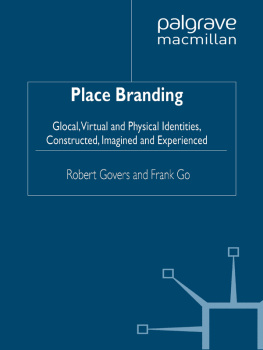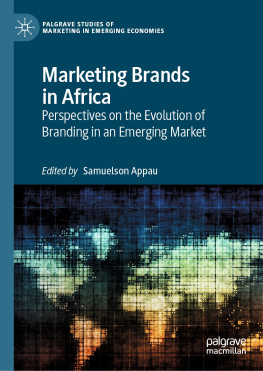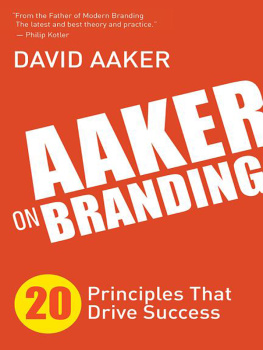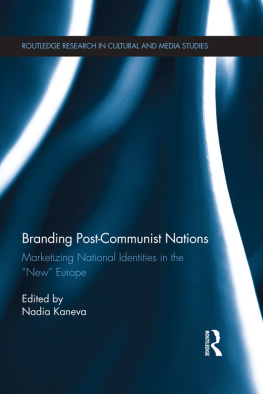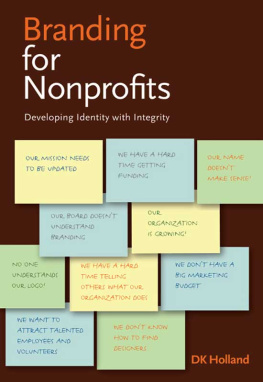Place Branding
Place Branding
Glocal, Virtual and Physical Identities, Constructed, Imagined and Experienced
Robert Govers and Frank Go


Robert Govers and Frank Go 2009
All rights reserved. No reproduction, copy or transmission of this publication may be made without written permission.
No portion of this publication may be reproduced, copied or transmitted save with written permission or in accordance with the provisions of the Copyright, Designs and Patents Act 1988, or under the terms of any licence permitting limited copying issued by the Copyright Licensing Agency, Saffron House, 610 Kirby Street, London EC1N 8TS.
Any person who does any unauthorized act in relation to this publication may be liable to criminal prosecution and civil claims for damages.
The authors have asserted their rights to be identified as the authors of this work in accordance with the Copyright, Designs and Patents Act 1988.
First published 2009 by
PALGRAVE MACMILLAN
Palgrave Macmillan in the UK is an imprint of Macmillan Publishers Limited, registered in England, company number 785998, of Houndmills, Basingstoke, Hampshire RG21 6XS.
Palgrave Macmillan in the US is a division of St Martins Press LLC, 175 Fifth Avenue, New York, NY 10010.
Palgrave Macmillan is the global academic imprint of the above companies and has companies and representatives throughout the world.
Palgrave and Macmillan are registered trademarks in the United States, the United Kingdom, Europe and other countries.
ISBN 978-0-230-23073-6
This book is printed on paper suitable for recycling and made from fully managed and sustained forest sources. Logging, pulping and manufacturing processes are expected to conform to the environmental regulations of the country of origin.
A catalogue record for this book is available from the British Library.
A catalog record for this book is available from the Library of Congress.
10 9 8 7 6 5 4 3 2 1
18 17 16 15 14 13 12 11 10 09
Printed and bound in Great Britain by
CPI Antony Rowe, Chippenham and Eastbourne
LIST OF FIGURES, TABLES AND EXHIBITS
Figures
1.1 Polyinclusive levels of hedonic consumption experiences
3.1 The 3-gap place branding model
5.1 Map of the United Arab Emirates, including Dubai
5.2 Population breakdown of Dubai, by country of origin
5.3 Dubais growth in supply of rooms in hotels and serviced apartments
5.4 Dubais hotel performance statistics, 20007
5.5 Hotel establishment guests, by nationality
5.6 Dubai visitors trip purposes
5.7 Map of Dubai including major ongoing development projects
5.8 Jumeirah properties: Madinat Jumeirah and Burj Al Arab
5.9 Dubais heritage in the Bastaqya and Shindagha area (H. H. Sheikh Saeeds house)
6.1 Map of the Netherlands, including Zeeland
7.1 Current map of Flanders
7.2 Map of the County of Flanders (16th century)
7.3 Level of regional attachment of the Flemish
7.4 Residents perception of Flemish identity
8.1 A model of network navigation for virtual experiences
9.1 Dubai website focal themes of images through clustering of motifs
10.1 Culinary festival De Smaek van Zeland held in Middelburg
10.2 Imaginative branding of folklore
10.3 New Zealand Edge
11.1 Components of place image and an example of four of these for Nepal
11.2 Choice set model
12.1 Survey sample designs and travel behaviour, awareness and patronage
12.2 Place image among four different awareness and patronage groups
13.1 Sample across destinations
13.2 Sample according to age of respondent
13.3 Number of countries visited
13.4 Sample according to income, family life cycle and occupation
13.5 Perceptual map of destinations and their image components
16.1 Gap-bridging place branding guide
Tables
2.1 Three approaches to the concept of image
2.2 Fields of study within environmental psychology in five travel phases
5.1 Opening of a typical instant messaging conversation in Dubai
6.1 The three most-selected images and the top-5 emotional adjectives connected with them
6.2 Multisensory elements of Zeeland, according to residents
7.1 Respondents geographical attachment
9.1 Sample distribution
9.2 Dubai website images content analysis results
9.3 Website focal themes and differences between sectors in Dubai
9.4 Frequency list of unique words in all Dubai website text
9.5 Central concepts of website content for sectors
11.1 A taxonomy of procedures for measuring place image
12.1 Place image attributes
12.2 The most common attributes used in place image studies
12.3 Sampling frames for first measurement
12.4 Results of factor analysis on thirty-two items measuring place image
13.1 Countries of residence of respondents
13.2 Sample across continents
13.3 Image descriptions for seven sample destinations
13.4 Information sources
13.5 Information sources for each of seven sample destinations
13.6 Perceived image of Dubai according to cultural background
13.7 Perceived image of Dubai according to gender
16.1 Constructive elements of identity
Exhibits
13.1 First page of the image survey questionnaire
13.2 Initial wording of central image survey question as proposed in the Delphi discussion
13.3 Final wording of page two of the image survey questionnaire resulting from the Delphi discussion
PREFACE
The topic of place branding is moving from its infant stage into adolescence. In application it is receiving widespread attention: many regions, cities and nations have established their place brand, are working on it, or have at least already given it some thought. However, there is a dearth of publications that deal with the topic in a comprehensive manner. That is to say, most titles emphasize one aspect, such as principles, case studies or specific areas of research, as opposed to treating the subject in its full breadth. While these, and practical guides on place branding, can offer highly valuable contributions, what seems to be missing is a textbook that brings the fundamentals, design and methods together in a systematic format that is academically grounded, but at the same time useful for practice. This is the void that the present volume is trying to fill.
Simon Anholt, in his 2007 book Competitive Identity, puts it well: although the usual context of brand theory may be buying and selling and promoting consumer goods, this is a thin layer that covers some of the hardest philosophical questions one can tackle: the nature of perception and reality, the relationship between objects and their representation, the phenomena of mass psychology, the mysteries of national identity, leadership, culture and social cohesion, and much more besides. Many of these questions will be addressed in this book. It departs from the assumption that a principles-based approach to place branding should help readers to achieve a balance between the conceptual and the practical, private and public interest, the potential conflict between continuity as captured in the heritage of place and change in the culture of any society. Therefore the present text on place branding, while dealing among other things with topics such as the importance of creating a logo and slogan, it does not offer quick solutions. Instead, it follows principles that we believe can, if applied diligently, help the reader to develop an understanding that place branding encompasses a process unfolding in phases, each with its own challenges and opportunities. Accordingly, the present text embraces the following principles. It is:

